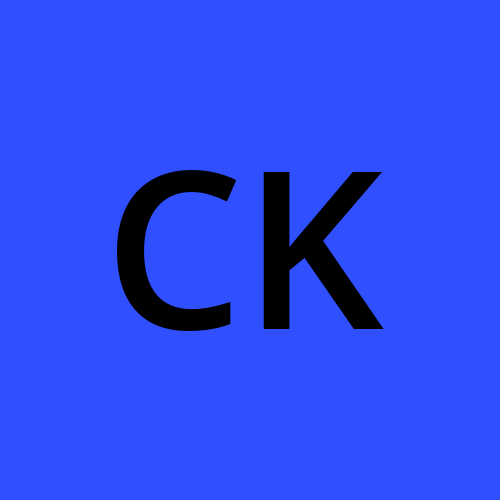[Flutter] 프로젝트 초기 설정 - 라우팅 (feat. Riverpod)
 Cherrie Kim
Cherrie KimTable of contents

앞서 말했든 이번 프로젝트에선 Riverpod를 활용할 예정이기에, 라우팅 기능이 내장되어있는 GetX와 달리 라우팅을 따로 설정해줘야 했다.
가장 인기있는 라우팅 라이브러리인 GoRouter를 활용하기로 결정했다. [링크]

GoRouter를 사용하는 기본적 라우팅 예제는 다음과 같다:
import 'package:go_router/go_router.dart';
// GoRouter configuration
final _router = GoRouter(
routes: [
GoRoute(
path: '/',
builder: (context, state) => HomeScreen(),
),
GoRoute(
path: '/page2/:id',
builder: (context, state) => Page2Screen(id: state.pathParameters['id']),
),
],
);
class MyApp extends StatelessWidget {
@override
Widget build(BuildContext context) {
return MaterialApp.router(
routerConfig: _router,
);
}
}
주요 메소드 설명
go:- 특정 경로로 이동한다.
goNamed:- 지정된 이름을 가진 경로로 이동한다.
pop:흔히 아는 pop. 현재 화면을 닫고 이전 화면으로 돌아간다.
canPop()을 통해 내비게이션 스택에서 뒤로 이동 가능한지 확인 가능하다.
popUntil:- 특정 조건을 만족할 때까지 내비게이션 스택에서 화면을 pop 한다
push:- 새로운 경로를 내비게이션 스택에 추가하고 해당 경로로 이동한다.
pushNamed:- 지정된 이름을 가진 새로운 경로를 스택에 추가하고, 해당 경로로 이동한다.
replace:현재 경로를 새로운 경로로 교체한다.
replaceNamed도 지원된다. 여타 *Named 들과 비슷한 기능을 한다.
위 메소드들의 예제 코드를 적어보자면, 다음과 같다:
void main() {
runApp(MyApp());
}
class MyApp extends StatelessWidget {
final GoRouter _router = GoRouter(
initialLocation: '/',
routes: [
GoRoute(
path: '/',
builder: (context, state) => HomeScreen(),
),
GoRoute(
path: '/details',
builder: (context, state) => DetailsScreen(),
),
GoRoute(
path: '/namedRoute',
name: 'namedRoute',
builder: (context, state) => NamedRouteScreen(),
),
],
);
@override
Widget build(BuildContext context) {
return MaterialApp.router(
routerDelegate: _router.routerDelegate,
routeInformationParser: _router.routeInformationParser,
);
}
}
class HomeScreen extends StatelessWidget {
@override
Widget build(BuildContext context) {
return Scaffold(
appBar: AppBar(title: Text('Home Screen')),
body: Center(
child: Column(
mainAxisAlignment: MainAxisAlignment.center,
children: [
ElevatedButton(
onPressed: () {
context.go('/details');
},
child: Text('Details로 이동(go) 한다'),
),
ElevatedButton(
onPressed: () {
context.goNamed('namedRoute');
},
child: Text('Named Route로 이동(go) 한다'),
),
ElevatedButton(
onPressed: () {
context.push('/anotherRoute');
},
child: Text('Another Route로 push 해서 이동한다'),
),
ElevatedButton(
onPressed: () {
if (context.canPop()) {
context.pop();
}
},
child: Text('canPop 조건을 만족하면 pop 한다'),
),
ElevatedButton(
onPressed: () {
context.replace('/details');
},
child: Text('Details 로 replace (스택 내 교체) 한다'),
),
ElevatedButton(
onPressed: () {
context.replaceNamed('namedRoute');
},
child: Text('Named Route 또한 replace가 사용 가능하다'),
),
],
),
),
);
}
}
프로젝트 사용 예시 (feat. 내비게이션 바 칠하기)
저번 계절학기 프로젝트에선 다음과 같이 사용했다.
(아직 배우는 단계에서 구현한 것이라 비합리적일 수 있습니다. 더 좋은 구현 방법이 있다면 언제든 의견 남겨주시면 감사하겠습니다!)
lib/app_router.dart파일을 따로 두어 라우팅을 관리했다.공통 UI shell을 제공하기 위해 ShellRoute를 사용했다. 이를 통해 여러 페이지에서 일관된 레이아웃을 공유 가능하다.
- 나는 내비게이션 바를 위해 사용했지만, 그 외에도 헤더나 푸터 등에 적용 가능하다!
class AppRouter {
GoRouter router(String locationAddress) {
return GoRouter(
routes: [
ShellRoute(
builder: (context, state, child) {
return Scaffold(
body: child,
bottomNavigationBar: CustomNavBar(
selectedIdx: calculateSelectedIdx(state.uri.path),
),
);
},
routes: [
GoRoute(
path: '/',
builder: (context, state) => const HomePage(),
),
GoRoute(
path: '/board',
builder: (context, state) => const BoardPage(),
),
GoRoute(
path: '/post/:id',
builder: (context, state) {
final postId = state.pathParameters['id'];
return PostPage(id: postId!);
},
),
GoRoute(
path: '/write',
builder: (context, state) => const WritePage(),
),
],
),
],
);
}
나는 아래 사진처럼 현재 페이지에 따라 내비게이션 바 아이콘을 색칠하고 싶었다.

그걸 위해 먼저 현재 페이지의 인덱스를 계산하는 함수를 만들었고,
(이때는 급해서 그냥 경로를 하드코딩해서 인덱스를 반환하게 했는데, Map으로 처리하면 관리가 더 쉬울 것 같다.)
static int calculateSelectedIdx(String location) {
switch (location) {
case '/':
return 0;
case '/write':
return 1;
case '/board':
case '/post':
return 2;
default:
return 0;
}
}
}
여기서 반환된 index를 CustomNavBar에 넣어준다.
onItemTap을 통해 적절한 경로로 내비게이션을 수행하고,
전달받은 index 값에 따라 아이콘의 색을 칠해준다 (지금 보니 이것도 중복 코드가 넘 많아서 더 깔끔하게 정리하면 좋겠다 싶다)
class CustomNavBar extends StatelessWidget {
final int selectedIdx;
const CustomNavBar({super.key, required this.selectedIdx});
void _onItemTap(BuildContext context, int idx) {
switch (idx) {
case 0:
context.go('/');
break;
case 1:
context.go('/write');
break;
case 2:
context.go('/board');
break;
}
}
@override
Widget build(BuildContext context) {
return Container(
decoration: BoxDecoration(color: Colors.white, boxShadow: [
BoxShadow(
color: Colors.grey.shade300,
offset: const Offset(0, -1),
blurRadius: 6)
]),
child: NavigationBar(
selectedIndex: selectedIdx,
labelBehavior: NavigationDestinationLabelBehavior.alwaysHide,
backgroundColor: Colors.white,
height: 60,
indicatorColor: Colors.transparent,
onDestinationSelected: (int idx) {
_onItemTap(context, idx);
},
destinations: <NavigationDestination>[
NavigationDestination(
icon: Icon(
Icons.location_on_outlined,
color: selectedIdx == 0 ? Colors.black54 : Colors.black12,
size: 32,
),
label: 'Home'),
NavigationDestination(
icon: Icon(
Icons.post_add_outlined,
color: selectedIdx == 1 ? Colors.black54 : Colors.black12,
size: 32,
),
label: 'Post'),
NavigationDestination(
icon: Icon(
Icons.grid_view_outlined,
color: selectedIdx == 2 ? Colors.black54 : Colors.black12,
size: 32,
),
label: 'Board'),
],
),
);
}
}
작성한지 한 달도 되지 않은 코드인데, 그 짧은 시간을 두고 다시 봐도 고칠 점이 이곳저곳 보인다. 코드는 한 번 작성한다고 끝이 아니라, 계속 회고하는 시간이 필요하단걸 다시 한 번 체감했다!
Subscribe to my newsletter
Read articles from Cherrie Kim directly inside your inbox. Subscribe to the newsletter, and don't miss out.
Written by
